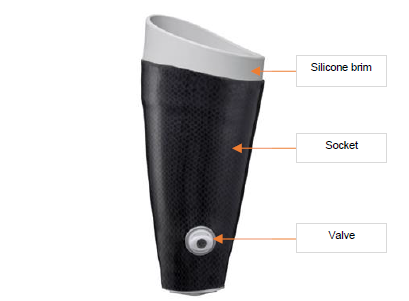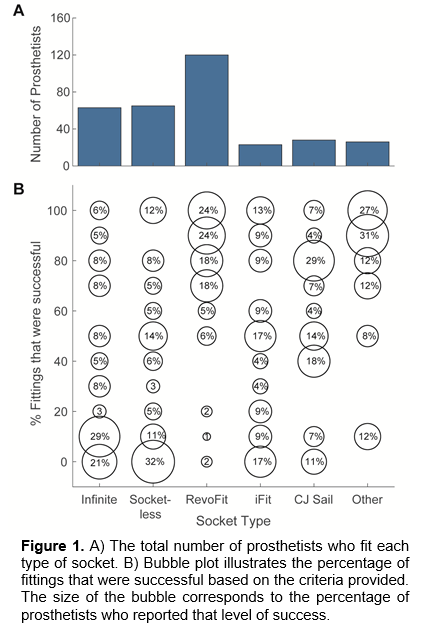Primary topic
BACKGROUND
Direct Socket for transfemoral (DS-TF) prosthetic user is a novel method of fabricating a laminated interface on to the residual limb but requires different training, production method and service model than what most prosthetists are familiar with. This method and model may improve patient satisfaction by enabling interface fabrication and delivery in one visit.
AIM
Document patient satisfaction regarding DS-TF interface versus the prosthetic users’ previous socket in terms of interface function and the clinic service model.
METHOD
In this longitudinal study (from July 2018 to April 2020), the DS-TF was implemented in six prosthetic clinics across the United States. Certified prosthetists (CP) and assistants were trained using a standard protocol. 47 prosthetic users participated, both those in need of a new socket and those without need. Two modules from the Orthotics and Prosthetics Users’ Survey (OPUS), involving questions related to satisfaction with the Device and Services, was used to evaluate each DS-TF user outcome vs. baseline. The only part of the prosthesis that was replaced was the interface, except in 2 cases.
RESULTS
Each DS-TF interface was fabricated, fit and delivered in a single clinic visit. At 6-months follow-up, 38 users reported an average of 29.8% increase in satisfaction with their new interface compared with original, and a 14.8% increase in satisfaction with the services they received from the clinic in providing of the new prosthesis vs. their original prosthesis. The main outcome increases were between baseline (initial fitting) and 6-week follow-up and remained consistent after 6 months. This improvement was consistent irrespective if the user needed a new socket for clinical reasons or not.
DISCUSSION AND CONCLUSION
OPUS CSD questions related to the function of the interface for all subjects indicate a significant improvement in user satisfaction with their DS-TF interface over their previous interface. All improvements were consistent between the 6-week and 6-month study periods. At 6MFU the average CSS score was 93, or 14.8% higher, a significant improvement.
Study shows that after standardized training and implementation, the DS-TF fabrication process including a new interface improves the user’s satisfaction with their prosthetic device and services.
REFERENCES
Paternò L, et al. Sockets for limb prostheses: A review of existing technologies and open challenges. IEEE Trans Biomed Eng. 2018;65(9):1996–2010.
Kamrad I, et al. SwedeAmp-the Swedish amputation and prosthetics registry: 8-year data on 5762 patients with lower limb amputation... Acta Orthop. 2020;22:1-7.
ACKNOWLEDGEMENTS
Study financially supported by Össur, authors are employees of Össur except I. Atlason. Principle Investigators received no compensation from Össur.

